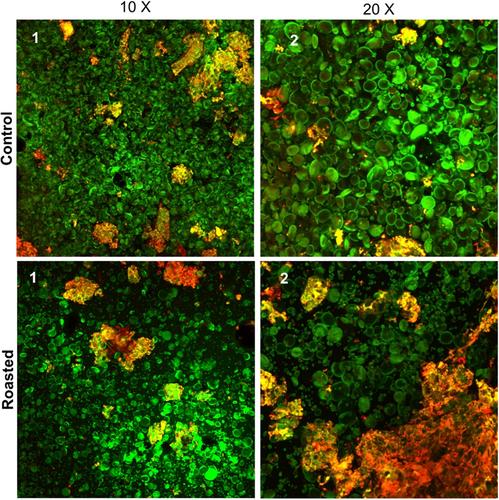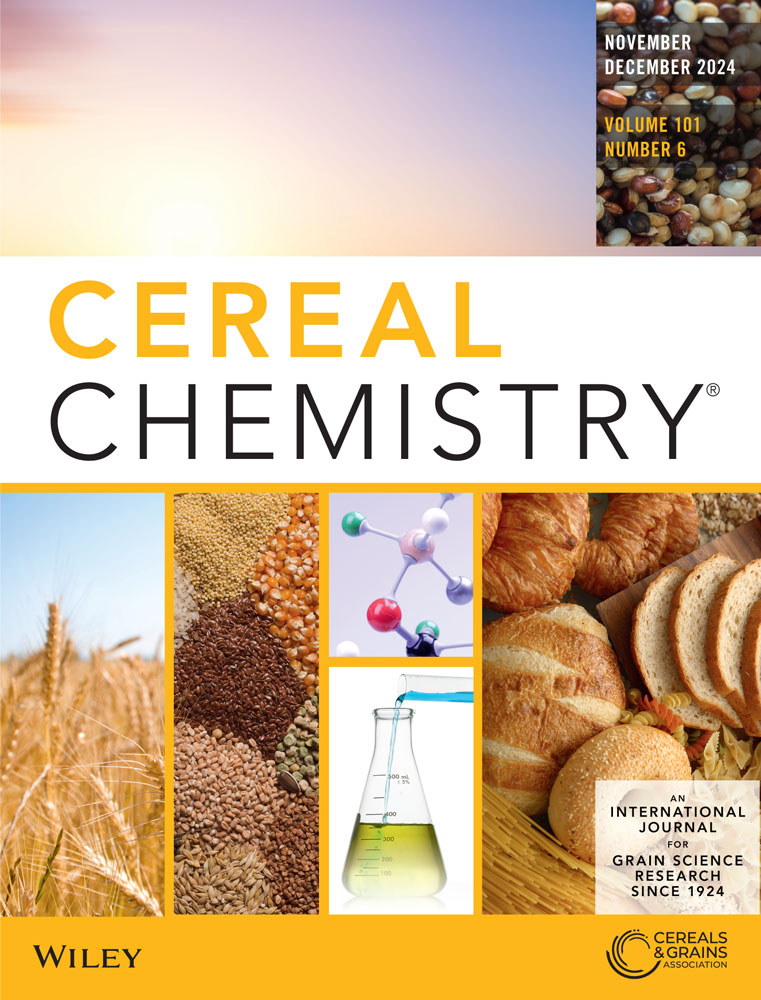Prior roasting of wheat impacts on the functionality of flour prepared from it: Part 1. Wheat flour viscosifying properties
Abstract
Background and Objectives
Dry thermal treatment of wheat modifies the properties of wheat and of flour prepared from it. The objective of this study was to investigate the effect of wheat roasting on microstructural properties of wheat grains using confocal laser scanning, X-ray diffraction (XRD), and scanning electron microscopy (SEM) techniques. The impact of roasting on the damaged starch contents, the solvent retention capacity profiles, and the pasting properties of the resulting flour prepared from roasted wheat were also studied.
Findings
Response surface models predicted wheat roasting at 115°C and 65 Hz (165 s) to enhance flour viscosifying properties. Roasting before milling resulted in grain puffing, slight damage to the starch granule surface, and destruction of the protein matrix, as observed using SEM. XRD analysis revealed that amylose–lipid complexation had occurred. As a result of roasting, the peak, hot paste, and final viscosities of flour from roasted wheat were significantly (p ≤ .05) higher than those of flour produced from control wheat.
Conclusions
Roasting induces structural changes in wheat. Flour produced from roasted wheat can be used to produce gel structures with increased viscosities.
Significance and Novelty
Dry thermal treatment improves the viscosifying properties of flour milled from roasted wheat.


 求助内容:
求助内容: 应助结果提醒方式:
应助结果提醒方式:


